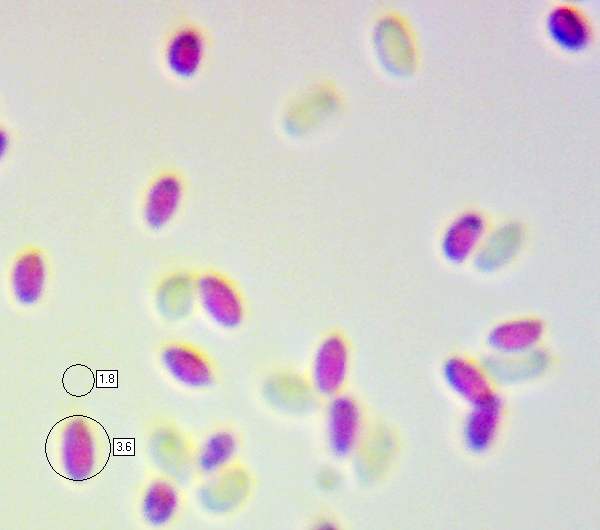Baeospora myosura (Fr.) Singer - Conifercone Cap
Phylum: Basidiomycota - Class: Agaricomycetes - Order: Agaricales - Family: Marasmiaceae
Distribution - Taxonomic History - Etymology - Identification - Culinary Notes - Reference Sources
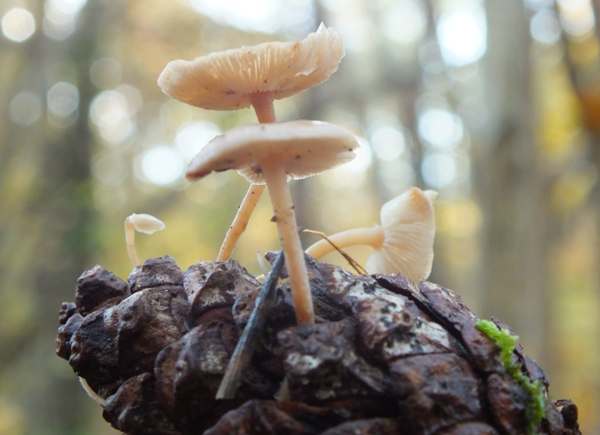
As the common name of this little mushroom declares, this is one of the very few agaricoid fungi that use only conifer cones as their food source.
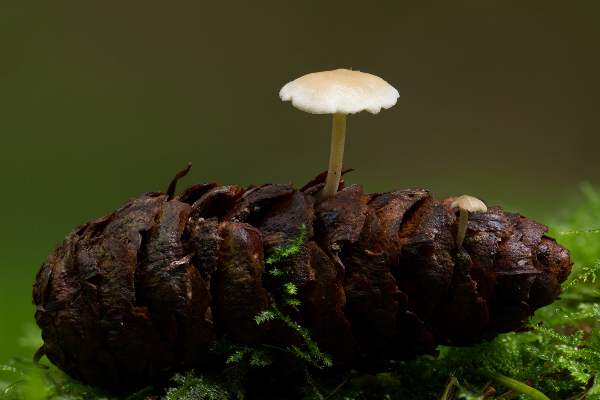
Distribution
Widespread and common throughout Britain and Ireland, the Conifercone Cap occurs also in most parts of mainland Europe from Scandinavia right down to the Mediterranean. This species is also common and widespread in North America.
Taxonomic history
This mushroom was described in 1818 by Elias Magnus Fries, who established its basionym when he gave it the scientific name Agaricus myosura. (Most gilled fungi were initially placed in a giant Agaricus genus, now redistributed to many other genera.) The currently-accepted scientific name Baeospora myosura was established in 1938 by American mycologist Rolf Singer.
Synonyms of Baeospora myosura include Agaricus myosurus Fr., Collybia myosura (Fr.) Quél., Marasmius myosurus (Fr.) P. Karst., Collybia friesii Bres., and Marasmius friesii (Bres.) Rea.
Etymology
The genus name Baeospora comes from the Greek word Baeo, meaning 'little' with the suffix -spora, meaning a spore. The spores of mushrooms in this genus are very tiny indeed.
The specific epithet myosura is from Latin and means 'mouse tail' and is probably a reference to the curved form of most stems of the Conifercone Cap mushroom.
Identification guide
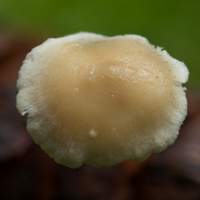 |
CapInitially convex, becoming broadly convex and later flattening; 1-2.5cm diameter;cap surface dry, smooth or finely silky, light brown in the centre fading to buff at the margin. |
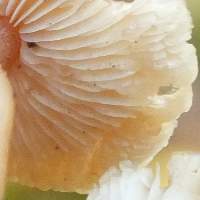 |
GillsThe crowded whitish gills of this little mushroom are narrowly connected to the stem. StemCylindrical, often curved; off white to pale brown; pruinose; 1-2mm diameter and 1.5-5cm long. There is no stem ring. |
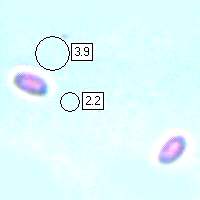 |
SporesEllipsoidal to almost cylindrical, smooth, 3-4 x 2-2.5μm; hyaline; inamyloid. Spore printWhite. |
Odour/taste |
Not distinctive. |
Habitat & Ecological role |
Saprobic, singly or in small groups, on rotting cones of coniferous trees such as pins or spruces. |
Season |
Summer and autumn in Britain and Ireland. |
Similar species |
The habitat (conifer cones) and tiny spores make it difficult to confuse this little mushroom with any others - but microscopically studying the spores is crucial because other cone-rotting species occur - for example Strobilurus esculentus, which is macroscopically similar to Baeospora myosura but has much larger spores. |
Culinary Notes
Baeospora myosura is so diminutive and insubstantial that any intention to make even a mushroom morsel (never mind a meal) is quite beyond comprehension.
Reference Sources
Fascinated by Fungi, 2nd Edition, Pat O'Reilly 2016, reprinted by Coch-y-bonddu Books in 2022.
British Mycological Society (2010). English Names for Fungi
Dictionary of the Fungi; Paul M. Kirk, Paul F. Cannon, David W. Minter and J. A. Stalpers; CABI, 2008
Taxonomic history and synonym information on these pages is drawn from many sources but in particular from the British Mycological Society's GB Checklist of Fungi.
Acknowledgements
This page includes pictures kindly contributed by David Kelly.
Fascinated by Fungi. Back by popular demand, Pat O'Reilly's best-selling 450-page hardback book is available now. The latest second edition was republished with a sparkling new cover design in September 2022 by Coch-y-Bonddu Books. Full details and copies are available from the publisher's online bookshop...
